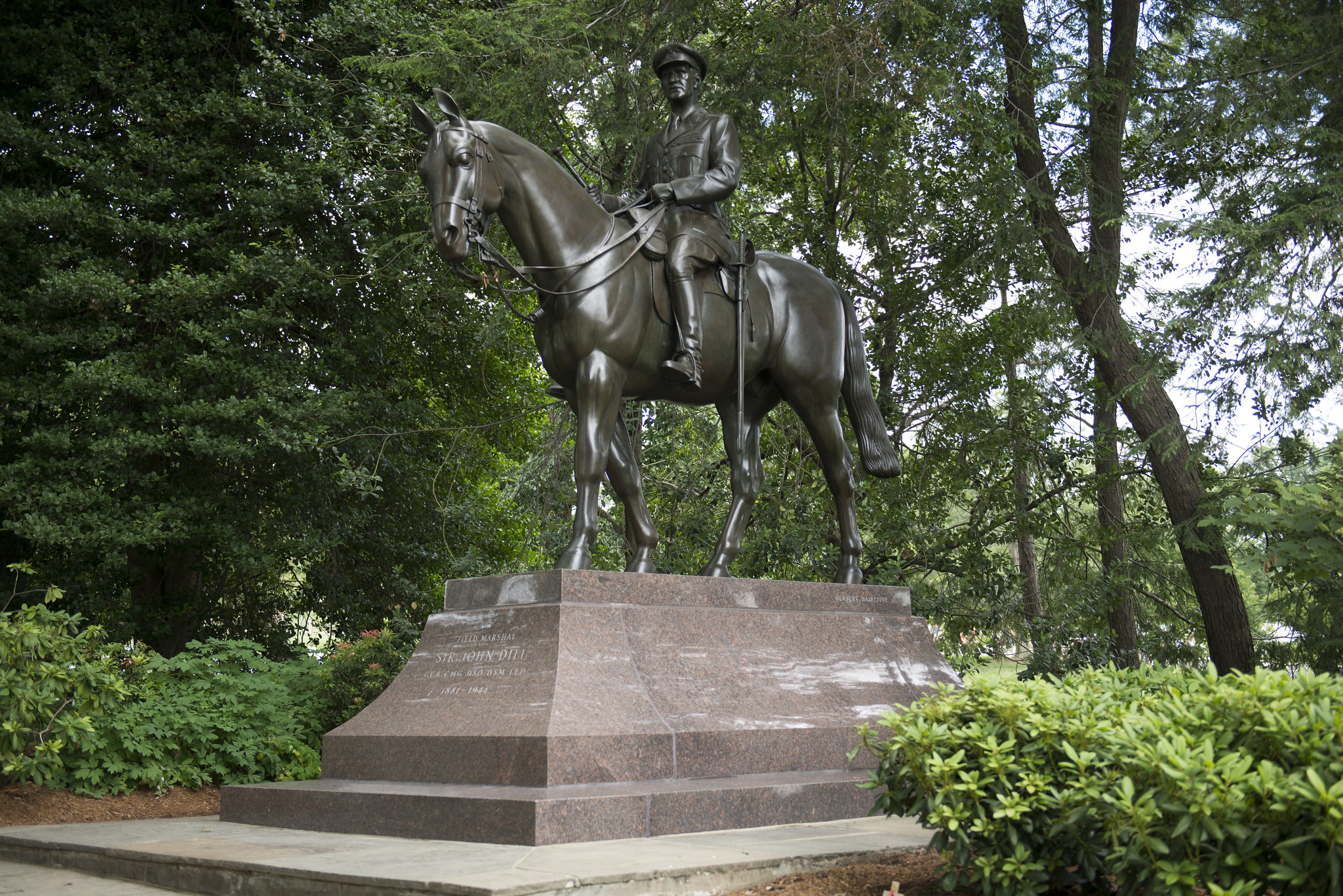Sir John Dill Memorial Grave

British Field Marshal Sir John Dill (1881-1944) is the highest-ranking foreign military officer buried at Arlington National Cemetery. Knighted in 1937, Dill served in the South African War and World War I, and commanded British forces in the mandate of Palestine (now Israel) during the interwar years. When the United States entered World War II in December 1941, Dill was sent to Washington, D.C. as the representative for the combined British and American chiefs of staff. President Franklin D. Roosevelt awarded him the Distinguished Service Medal for his work in securing cooperation between British and American forces. Through the influence of his close friend Gen. George C. Marshall (buried in Section 7), Dill was buried at Arlington through a Congressional joint resolution approved by President Franklin D. Roosevelt in December 1944.
The site, at the intersection of two major cemetery roads (Roosevelt and Grant Drives), was selected for maximum visibility. The monument was unveiled by Marshall and dedicated by President Harry Truman on November 1, 1950. At the ceremony, Truman described Dill as "a great man" who served "both our countries in the common struggle for a free and decent world."
Designed by internationally acclaimed equestrian sculptor Herbert Haseltine and cast in Belgium, the bronze statue depicts Sir John Dill in a British World War II-era military uniform, astride his horse. (It is one of two equestrian statues in the cemetery; the other honors Maj. Gen. Philip Kearny.) The memorial is elevated on a polished dark granite plinth surrounded by a gray flagstone plaza. Two granite cannon bollards flank the stairs and path to the statue. On the bollards, bronze shields with inset ivory letters contain the text for the Congressional Joint Resolution honoring Dill and his Distinguished Service Medal citation.
The pedestal design is attributed to noted architects William Welles Bosworth and Lawrence Grant White (of McKim, Mead & White). The landscape, attributed to Leon H. Zach (Olmstead Brothers and Chief of the Army Planning Branch), reflects the Beaux-Arts style popularized by the City Beautiful Movement of the early 20th century.